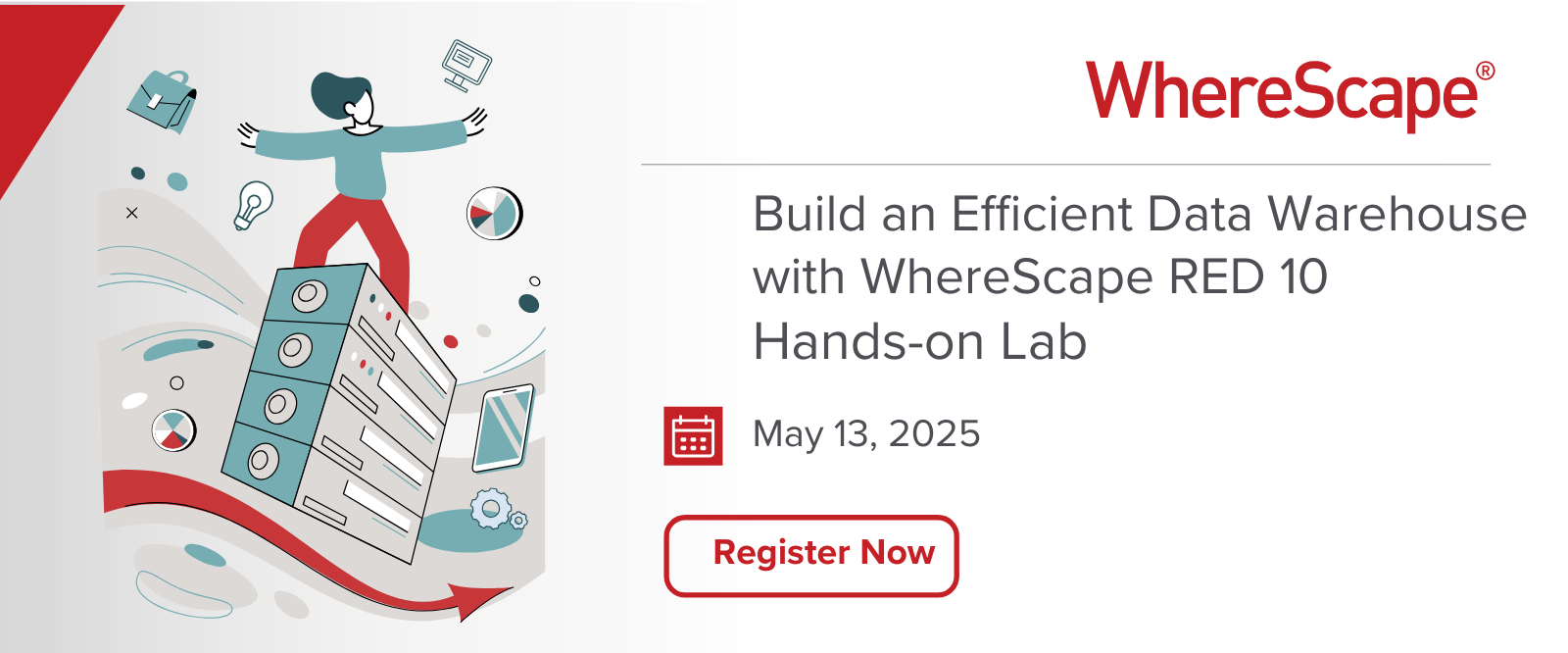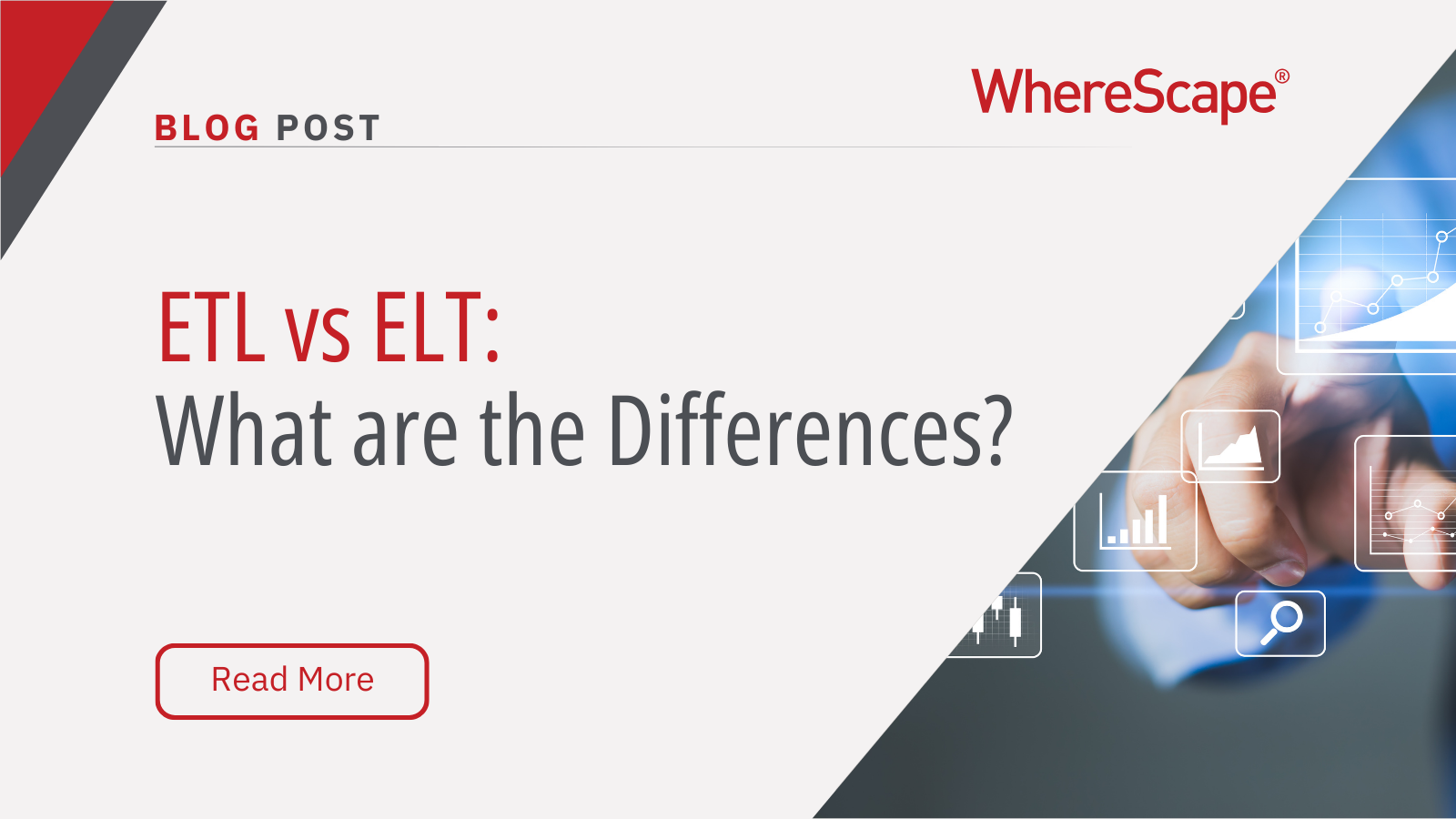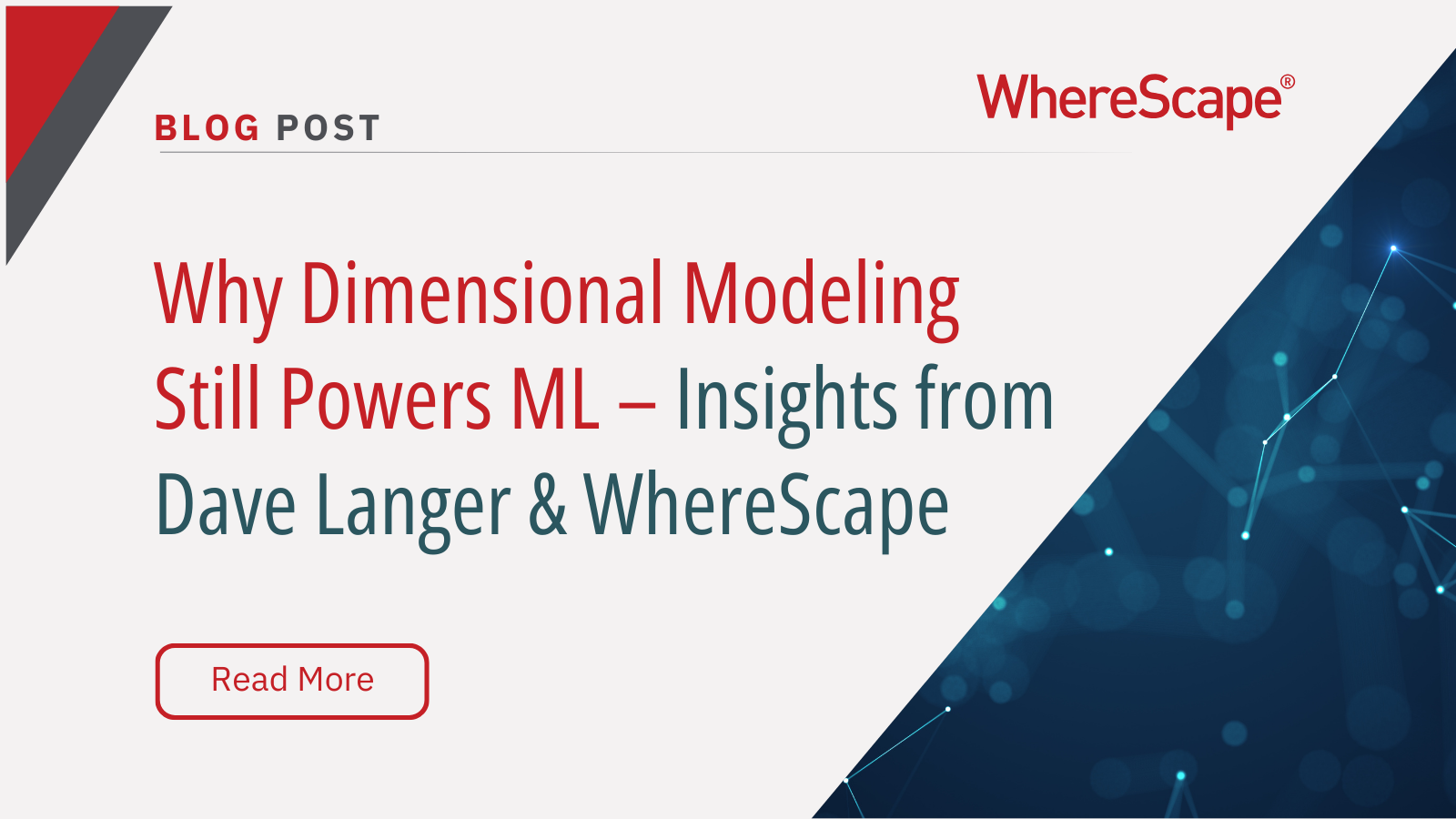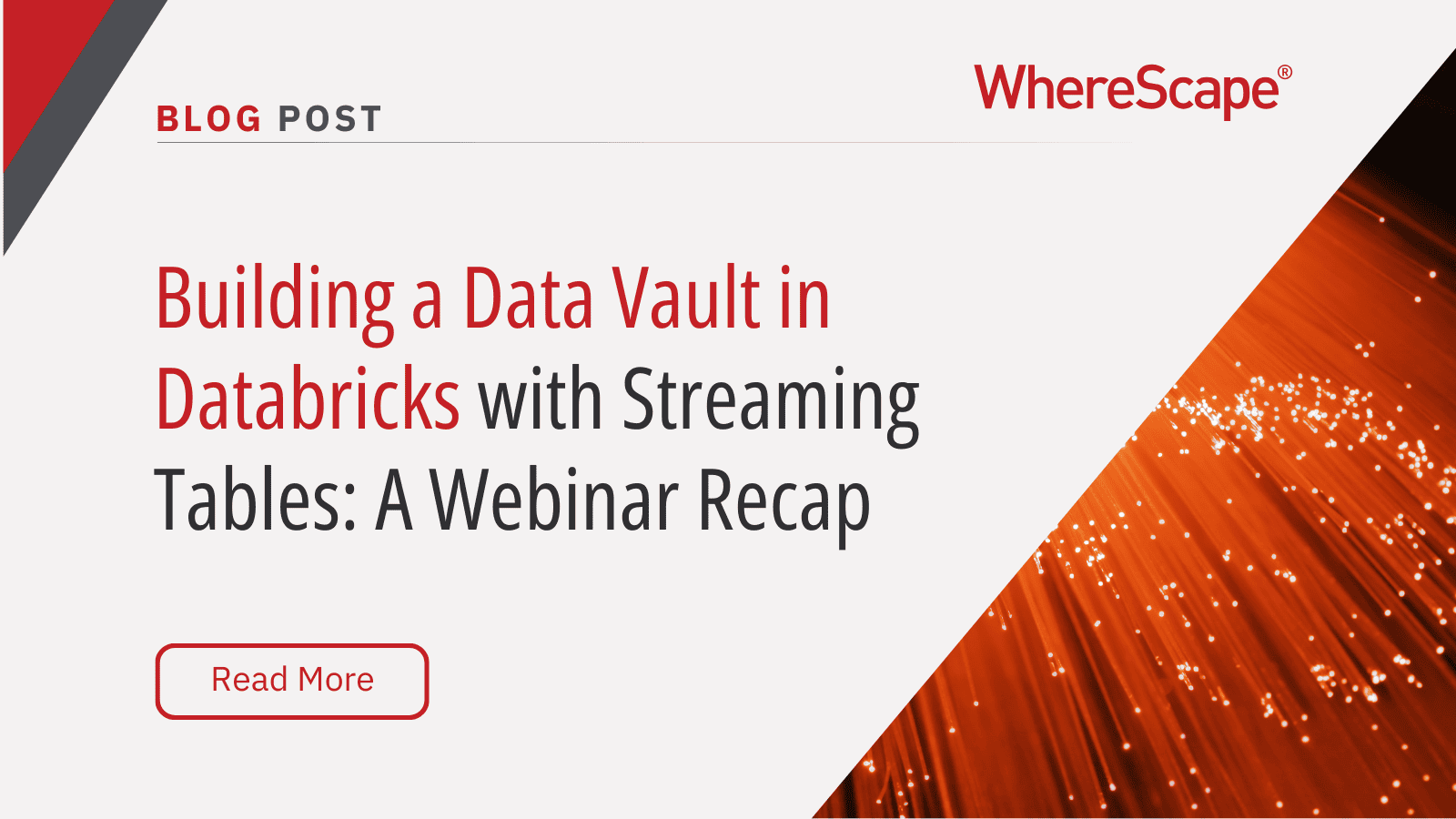Tune in for a free, live virtual hands-on lab...
Agile Data Warehouse Design for Rapid Prototyping
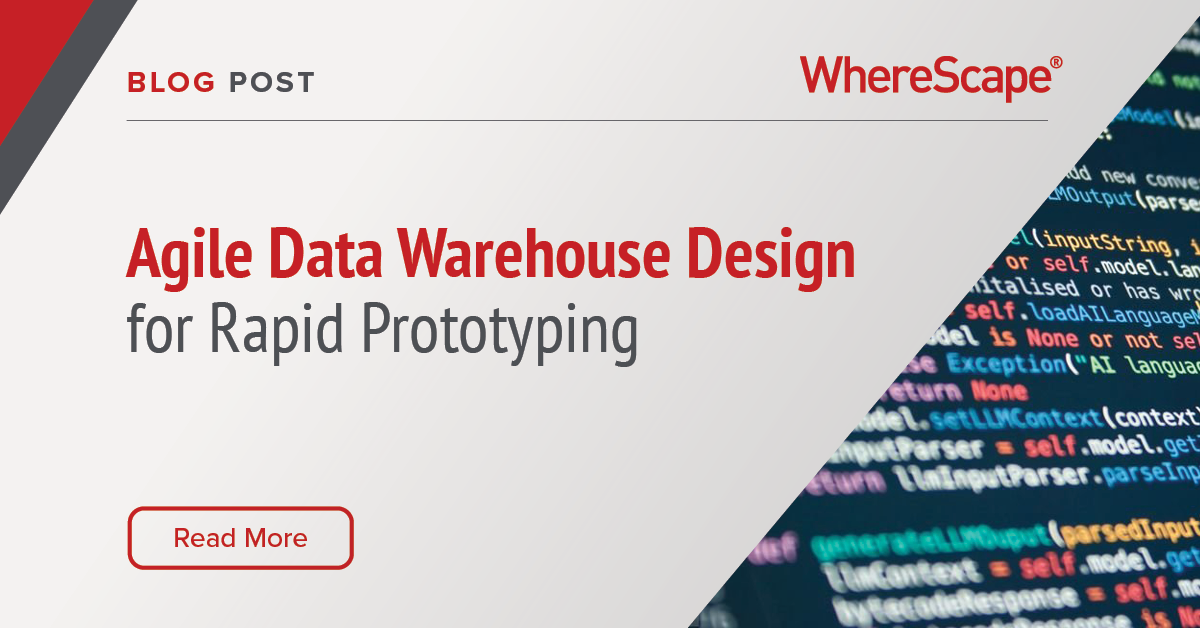
Agile Data Warehouse Design through Rapid Prototyping
While most people know WhereScape for its automated code generator that eradicates repetitive hand-coding tasks, there is another major way in which the software can save huge amounts of time and resources. Prototyping is a feature of the automated agile data warehouse design lifecycle that skips several manual steps. It allows the customer to visualize the design of the architecture they have requested, with full lineage, before the build takes place. There are two different ways to achieve this with WhereScape.
Agile Data Modeling
The most efficient pathway is through data-driven design, a process central to WhereScape RED, which not only aligns models closely with source systems but also excels in agile data integration, leveraging data virtualization techniques. This style of modeling empowers developers, data analysts, and data engineers to swiftly create a physical model using the business’s actual data, demonstrating its practical application.
Automated ELT
By incorporating data from diverse sources, this approach facilitates a comprehensive data integration strategy, crucial for effective data virtualization. It allows for a detailed prototype model, which is instrumental for data analysts and engineers in understanding and visualizing the data flow. This model vividly illustrates how the requirements will materialize in the data warehouse and how the various created objects interplay, providing a clear and actionable guide for data analysts and data engineers.
IT professionals can present this model to business stakeholders, allowing them to identify any desired changes or previously overlooked requirements. Once approved, the team can deploy the prototype as-is or restructure it to source from foundational data layers like a Data Vault or an Enterprise Data Warehouse (EDW). The prototype becomes a versatile tool for reporting and other functionalities while continuing to integrate seamlessly with the foundational data layer. This method is especially effective in constructing simpler data architectures, like a data mart, where agile data modeling and integration play pivotal roles.
WhereScape 3D: Crafting the Ideal Blueprint
WhereScape 3D specializes in scoping and modeling data sources into optimal blueprints before any data manipulation. This is particularly beneficial for intricate structures like Data Vaults, typically handled by specialist architects. Following a similar collaborative process with business stakeholders, the model transitions to RED for data population and physicalization.
Automated Data Modeling Benefits
Automating the scope, design, and modeling processes, WhereScape’s speed in creating prototypes is a game-changer. It’s the difference between securing model approval in mere hours versus six months; transforming drawn-out, costly projects into agile initiatives that deliver functional architecture in days, not months. Presenting a physical model to stakeholders while ideas are fresh fosters collaboration and facilitates swift, iterative adjustments. Without such a model, projects risk misinterpretation of requirements, leading to costly delays and revisions.
Agile Data Warehouse Design with Real-Time Data Accessibility
Before the advent of Data Warehouse Automation, businesses would relay requirements to IT, who then engaged siloed specialist teams for scoping, designing, modeling, and building the requested data warehouse or mart. This manual process, often spanning three to six months, frequently struggled to keep up with the dynamic nature of real-time data, resulting in designs that missed the mark due to evolving requirements or misunderstandings.
Traditional methodologies, while attempting to address complex data schemas, heightened the risk of late-stage errors, difficult and time-consuming to rectify, especially with hand-coding. Moreover, these approaches often fell short of making data accessible promptly, impeding the ability to leverage real-time insights.
Automated Prototyping
Automated prototyping allows stakeholders to check and sign off on the architecture at the modeling stage, ensuring that the business process aligns seamlessly with the planned structure. Then RED, serving as an efficient extract, transform, and load (ETL) data integration tool, completes all the steps from the physical model stage up to including documentation. It automates everything from the scoping of source systems to determine the location and quality of existing data, all the way through to generating DDL structures on your target database.
This is the actual code that loads your data onto your target, encompassing all transformations you would write to populate your data models with the necessary data sets, business logic, and so on, effectively managing the data stores.
WhereScape orchestrates the infrastructure you already have to work faster by using the power of the target database to do the transformation work in an ELT (Extract, Load, Transform) process. This approach leverages existing data and data sets efficiently, minimizing the need for extensive restructuring of business processes. It bypasses the slowdown associated with additional black boxes, a common issue with the 1990s ETL tools still in use today. RED uses stage tables and stage views to process data through the required steps, utilizing the patterns you already employ in your data stores.
If you need to make any changes at a later date, you can implement them much more quickly. WhereScape is metadata-driven. You can tweak the metadata behind this diagram without restarting the modeling process, as it automatically configures all upstream and downstream implications.
Agile Data Modeling at Atea
Atea is a Nordic IT infrastructure company that uses WhereScape to automate much of its manual data warehouse processes. This is how the company’s Chief Architect in Sweden, Torgil Hellman, describes the change he experienced when switching to Data Automation.
“My days used to be that I’d have the SQL Management Studio up and I was looking at SQL code. Now I don’t remember the last time I had to go into SQL Server because I can do everything I need in WhereScape. I spend much more time modeling and listening to what people’s demands are instead of changing code, running jobs, or making sure something works.
“For me, WhereScape is a gamechanger because when I go into meetings, I don’t have to spend time explaining the techy things, I can spend time listening to the needs of the business and do data modeling, and I can do it very quickly because it’s a very agile system. So if they want to have a new field or they want to put in something like a new dimension, a couple of hours later I have it in there, and I know it’s going to work.”
In summary, agile data warehouse design, especially when facilitated by WhereScape, represents a transformative approach to data management. Through agile prototyping and data modeling, we’ve seen how this method dramatically reduces the time and resources traditionally required in data warehouse projects. Key benefits include:
- Speed and Efficiency: Automated processes enable rapid prototyping, moving from concept to model in a fraction of the usual time.
- Enhanced Collaboration: Physical models and prototypes facilitate better communication between IT and business stakeholders, ensuring alignment of goals and requirements.
- Flexibility and Adaptability: Agile methodologies allow for quick adjustments, accommodating changes in business needs more effectively.
- Error Reduction: Early-stage visualization and approval of models significantly decrease the likelihood of costly errors in later stages.
This approach not only streamlines the technical process but also fosters a more collaborative, responsive, and efficient environment for both IT professionals and business stakeholders. Embracing WhereScape’s agile data warehousing solutions means stepping into a future where data management is no longer a bottleneck but a catalyst for innovation and growth.
Data Automation
Ready to transform your data management strategy? Don’t just take our word for it – experience the power and efficiency of WhereScape first-hand. Book a demo today and see how WhereScape can revolutionize your data warehouse design, turning complex processes into agile, efficient solutions that drive your business forward. Join the ranks of successful companies like Atea and empower your team with the tools they need to excel in today’s fast-paced data-driven world. Book your demo now or check out our free trial here.
ETL vs ELT: What are the Differences?
In working with hundreds of data teams through WhereScape’s automation platform, we’ve seen this debate evolve as businesses modernize their infrastructure. Each method, ETL vs ELT, offers a unique pathway for transferring raw data into a warehouse, where it can be...
Dimensional Modeling for Machine Learning
Kimball’s dimensional modeling continues to play a critical role in machine learning and data science outcomes, as outlined in the Kimball Group’s 10 Essential Rules of Dimensional Modeling, a framework still widely applied in modern data workflows. In a recent...
Automating Data Vault in Databricks | WhereScape Recap
Automating Data Vault in Databricks can reduce time-to-value by up to 70%—and that’s why we hosted a recent WhereScape webinar to show exactly how. At WhereScape, modern data teams shouldn't have to choose between agility and governance. That's why we hosted a live...
WhereScape Recap: Highlights From Big Data & AI World London 2025
Big Data & AI World London 2025 brought together thousands of data and AI professionals at ExCeL London—and WhereScape was right in the middle of the action. With automation taking center stage across the industry, it was no surprise that our booth and sessions...
Why WhereScape is the Leading Solution for Healthcare Data Automation
Optimizing Healthcare Data Management with Automation Healthcare organizations manage vast amounts of medical data across EHR systems, billing platforms, clinical research, and operational analytics. However, healthcare data integration remains a challenge due to...
WhereScape Q&A: Your Top Questions Answered on Data Vault and Databricks
During our latest WhereScape webinar, attendees had fantastic questions about Data Vault 2.0, Databricks, and metadata automation. We’ve compiled the best questions and answers to help you understand how WhereScape streamlines data modeling, automation, and...
What is Data Fabric? A Smarter Way for Data Management
As of 2023, the global data fabric market was valued at $2.29 billion and is projected to grow to $12.91 billion by 2032, reflecting the critical role and rapid adoption of data fabric solutions in modern data management. The integration of data fabric solutions...
Want Better AI Data Management? Data Automation is the Answer
Understanding the AI Landscape Imagine losing 6% of your annual revenue—simply due to poor data quality. A recent survey found that underperforming AI models, built using low-quality or inaccurate data, cost companies an average of $406 million annually. Artificial...
RED 10: The ‘Git Friendly’ Revolution for CI/CD in Data Warehousing
For years, WhereScape RED has been the engine that powers rapidly built and high performance data warehouses. And while RED 10 has quietly empowered organizations since its launch in 2023, our latest 10.4 release is a game changer. We have dubbed this landmark update...
The Assembly Line for Your Data: How Automation Transforms Data Projects
Imagine an old-fashioned assembly line. Workers pass components down the line, each adding their own piece. It’s repetitive, prone to errors, and can grind to a halt if one person falls behind. Now, picture the modern version—robots assembling products with speed,...
Related Content
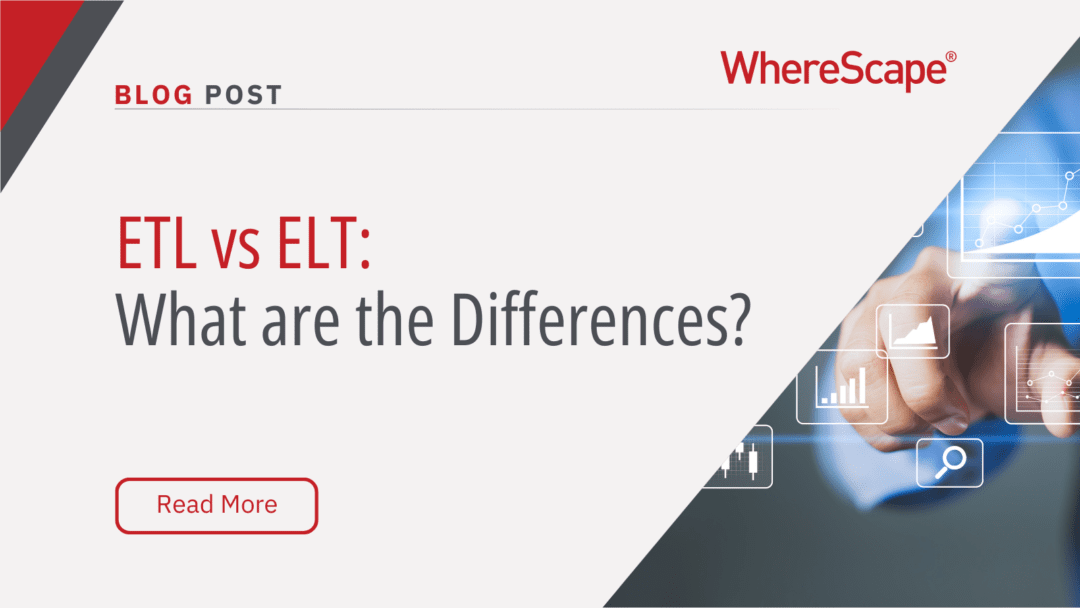
ETL vs ELT: What are the Differences?
In working with hundreds of data teams through WhereScape’s automation platform, we’ve seen this debate evolve as businesses modernize their infrastructure. Each method, ETL vs ELT, offers a unique pathway for transferring raw data into a warehouse, where it can be...
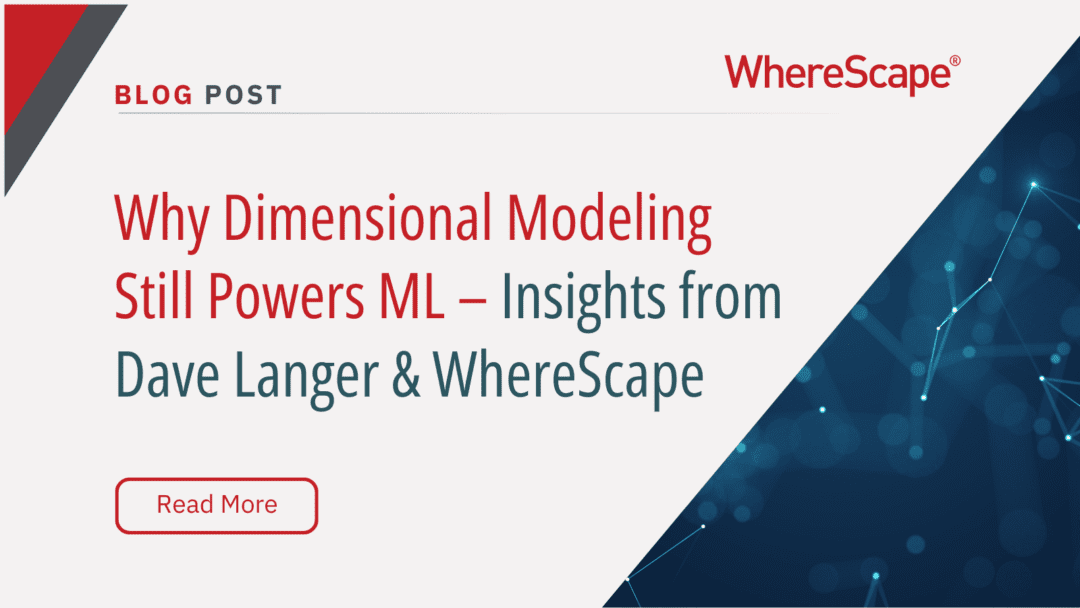
Dimensional Modeling for Machine Learning
Kimball’s dimensional modeling continues to play a critical role in machine learning and data science outcomes, as outlined in the Kimball Group’s 10 Essential Rules of Dimensional Modeling, a framework still widely applied in modern data workflows. In a recent...
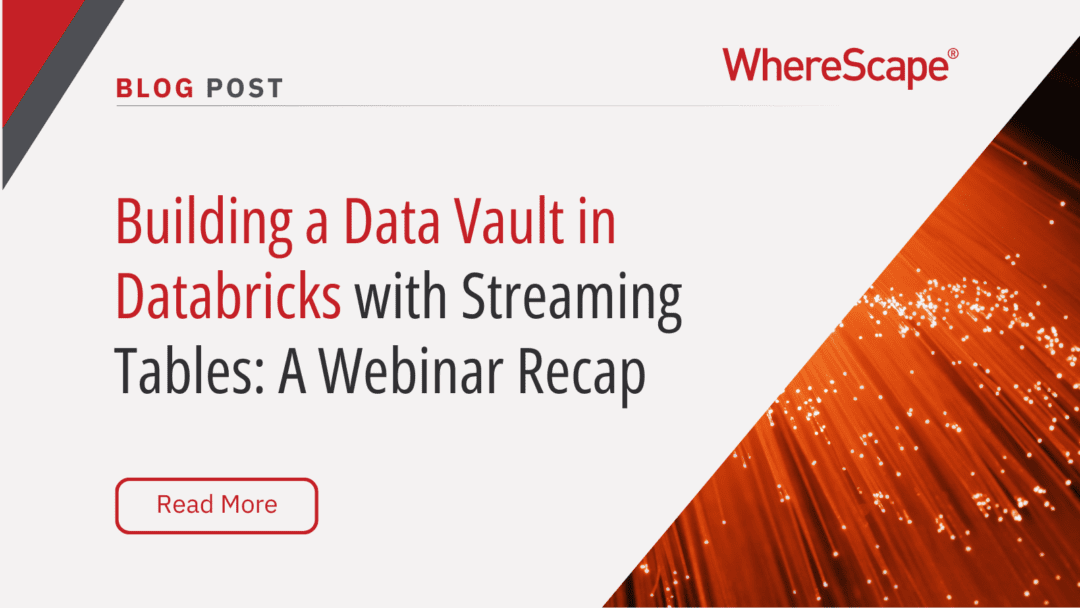
Automating Data Vault in Databricks | WhereScape Recap
Automating Data Vault in Databricks can reduce time-to-value by up to 70%—and that’s why we hosted a recent WhereScape webinar to show exactly how. At WhereScape, modern data teams shouldn't have to choose between agility and governance. That's why we hosted a live...
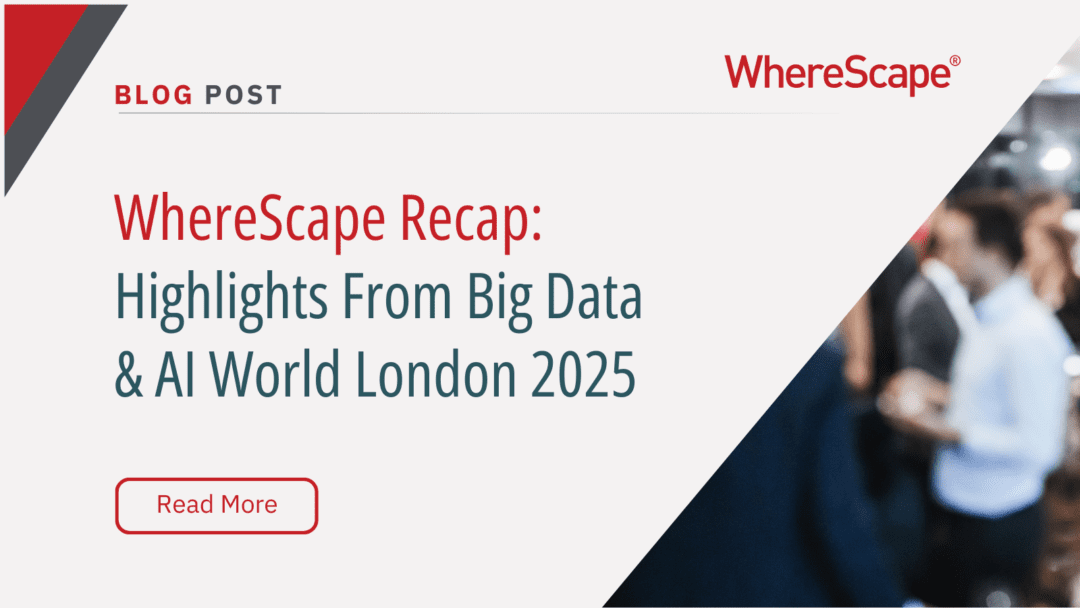
WhereScape Recap: Highlights From Big Data & AI World London 2025
Big Data & AI World London 2025 brought together thousands of data and AI professionals at ExCeL London—and WhereScape was right in the middle of the action. With automation taking center stage across the industry, it was no surprise that our booth and sessions...

